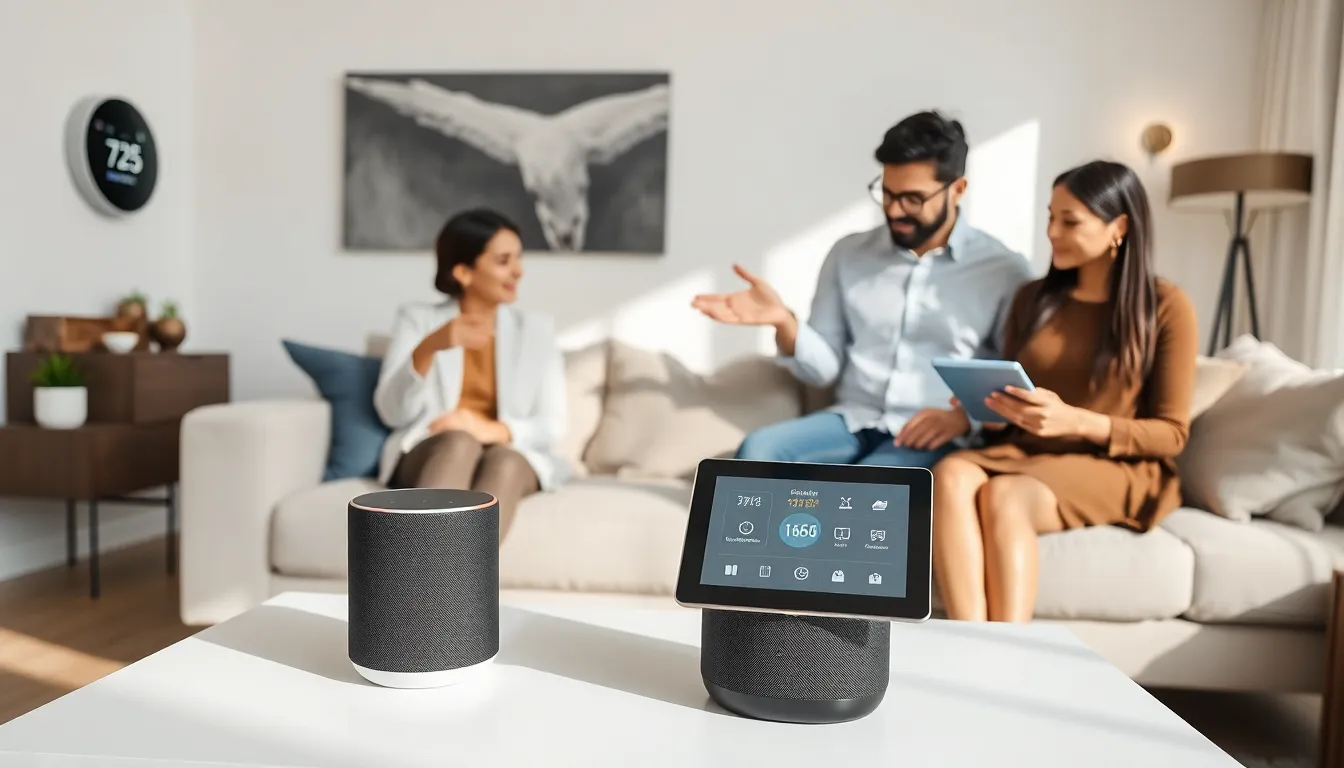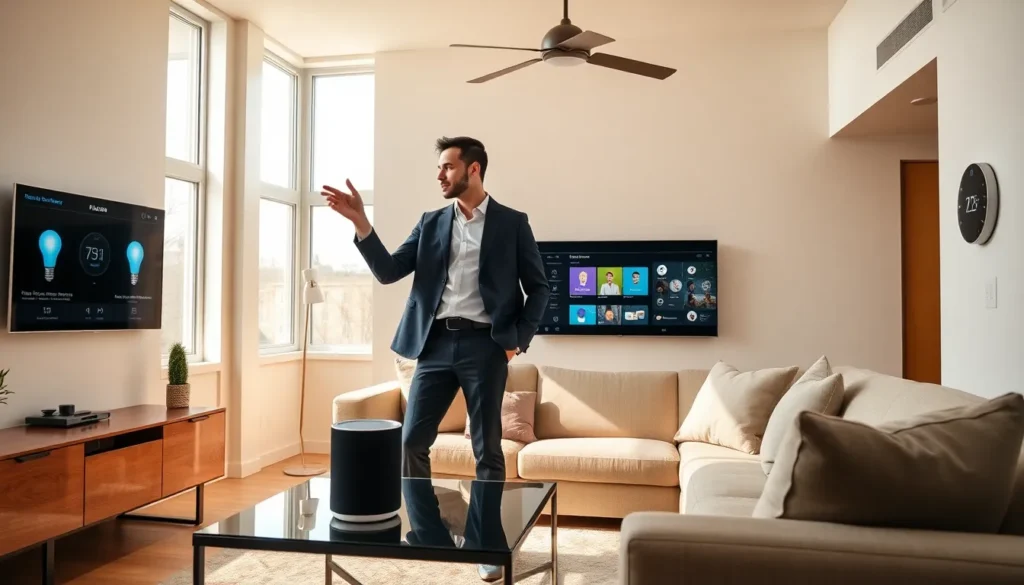Table of Contents
ToggleEveryone’s talking about connected homes, but do you really know what that means? Imagine a place where your fridge knows you’re out of milk before you do, or your lights automatically dim when it’s movie night. Sounds dreamy, right? As technology zips ahead at lightning speed, the connected home ecosystem is evolving into a reality that’s as entertaining as it is efficient. Buckle up, because we’re diving into the whirlpool of connected home trends that are not only transforming our living spaces but also our daily routines. Let’s uncover what the future of home life looks like, and why you should care.
Understanding the Connected Home Ecosystem

The term ‘connected home’ isn’t just a buzzword tossed around at tech conferences: it represents a holistic shift in how we interact with our living spaces. Picture a home where everything ‘talks’ to each other. From your thermostat that learns your daily schedule to your smart speakers that understand your commands, the connected home ecosystem is about seamless integration.
At its core, the connected home depends on IoT (Internet of Things) technology, which allows everyday devices to send and receive data. This interconnectivity makes your home smarter, leading to improved convenience and, dare we say, a dash of luxury. With the right setup, you could manage your entire house with a swipe of your smartphone or even your voice.
But, understanding this complex web of devices is crucial. Each gadget, from smart plugs to security cameras, plays a role in the overall system. Familiarity with these components ensures that homeowners can maximize the potential of their connected devices.
The Rise of Smart Devices in Everyday Life
In recent years, smart devices have transitioned from futuristic concepts to everyday necessities. When was the last time you ventured into a store without spotting something smart? Smart speakers, thermostats, and even kitchen appliances are now household staples. In fact, a study shows that over 70% of American homes own at least one smart device, and the numbers are expected to keep soaring.
One of the key driving factors behind this trend is convenience. Imagine receiving alerts from your doorbell camera while away on vacation. Or how about controlling your home’s temperature remotely on a blistering summer day? We live in an age where instant gratification is the norm, and smart devices can provide just that.
As manufacturers innovate, they are making devices more user-friendly, widening their appeal. Even people typically resistant to technology find themselves tempted. From simple apps to intuitive designs, the focus rests on usability.
Key Connected Home Trends Shaping the Future
Connected home innovations are riding high, creating a wave of change across various aspects of our lives. Some of the standout trends include:
Enhancing Home Security with Smart Technology
Gone are the days of relying solely on traditional locks and alarms. Home security is undergoing a tech makeover. Smart cameras, motion detectors, and doorbell cams provide homeowners with real-time updates and remote monitoring capabilities. For many, the added peace of mind is priceless. With features like facial recognition and 24/7 streaming, knowing who’s at your front door has never been easier.
Energy Efficiency and Sustainability Innovations
With climate change weighing heavily on our conscience, many consumers are seeking out solutions that can contribute to a more sustainable lifestyle. Connected homes come to the rescue with smart thermostats and energy-efficient appliances that adapt to users’ habits. Imagine your smart thermostat adjusting automatically when it detects no one is home, saving energy and money. The adoption of solar technology and battery storage systems further enhances the allure of a sustainable home.
The Role of AI and Automation in Home Management
Artificial intelligence and automation are rapidly redefining home management. From voice-driven assistants that organize schedules to automated lighting systems that adjust based on activity levels, AI takes home management to an extraordinary level. The ability to delegate tasks to a smart assistant frees up valuable time, allowing homeowners to focus on more enjoyable things.
Consumer Insights and Adoption Rates
Understanding consumer preferences and adoption rates is essential for mapping the future of connected homes. Recent surveys indicate that 90% of consumers express interest in smart home devices. Yet, while enthusiasm is high, actual adoption rates reveal a more complex picture.
Barriers such as security concerns, initial costs, and perceived complexity can hold consumers back. Still, as technology advances and becomes more affordable, hesitation continues to wane. Companies are prioritizing user education to ensure a smoother transition into this digital age.
Interestingly, younger generations are leading the charge toward connected home adoption, with millennials and Gen Z showing a strong preference for smart technology. They tend to value convenience and functionality, and they are willing to invest in a future where their homes are seamlessly integrated with technology.
This generational shift suggests that connected homes will evolve rapidly in the coming years, creating a tech-savvy environment that could redefine societal norms.
Challenges and Considerations for Connected Homes
While the bright future of connected homes shines ahead, some hurdles need consideration. Privacy concerns are at the forefront. As homes become more interconnected, the risk of cyber threats escalates, bringing to light the importance of secure networks and protected devices.
User education is vital to navigating these challenges. A cyber-attack can cripple a family’s peace of mind, leading many to hesitate when it comes to embracing smart home technology. Hence, manufacturers must prioritize user-friendly designs alongside robust security measures.
Also, the compatibility of devices remains a sticking point. Not all smart devices communicate seamlessly, leading to frustration among users trying to create a cohesive ecosystem. Consumers increasingly favor platforms that integrate multiple brands, allowing for more streamlined interactions.
Addressing these challenges is critical for fueling the growth of connected homes. Success lies in balancing innovation and security.





